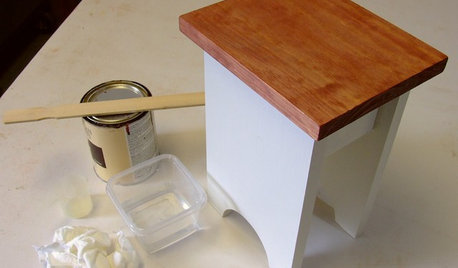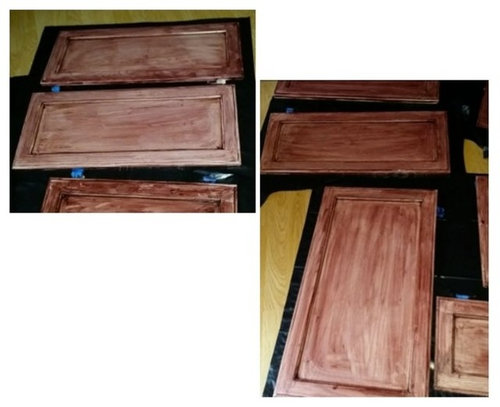First Coat - General Finishes Gel Stain
oyiwaanoela
9 years ago
Related Stories

REMODELING GUIDESPro Finishing Secret: Aniline Dye for Wood
Deeper and richer than any stain, aniline dye gives wood stunningly deep color and a long-lasting finish
Full Story
KITCHEN WORKBOOKWhen to Pick Kitchen Fixtures and Finishes
Is it faucets first and sinks second, or should cabinets lead the way? Here is a timeline for your kitchen remodel
Full Story
KITCHEN CABINETSKitchen Cabinet Color: Should You Paint or Stain?
Learn about durability, looks, cost and more for wooden cabinet finishes to make the right choice for your kitchen
Full Story
DIY PROJECTSCool Tip: Mimic Stain With a DIY Color Wash
Get the look of an oil-based stain without all the bother, using this easy wash made with paint
Full Story
MOST POPULARFirst Things First: How to Prioritize Home Projects
What to do when you’re contemplating home improvements after a move and you don't know where to begin
Full Story
HOUSEKEEPINGHow to Clean Grout — Stains and All
If your grout is grossing you out, this deep-cleaning method will help it look new again
Full Story
ARCHITECTUREGet a Perfectly Built Home the First Time Around
Yes, you can have a new build you’ll love right off the bat. Consider learning about yourself a bonus
Full Story
HOME INNOVATIONSConsidering Renting to Vacationers? Read This First
More people are redesigning their homes for the short-term-rental boom. Here are 3 examples — and what to consider before joining in
Full Story
MOVINGYour First Home: Beautiful Basics and Multitaskers for Every Room
Here’s what to choose and what to avoid when outfitting a new house
Full Story
BATHROOM DESIGNA Crash Course in Bathroom Faucet Finishes
Learn the pros and cons of 9 popular faucet finishes
Full Story










rwiegand
oyiwaanoelaOriginal Author
Related Professionals
Alton Cabinets & Cabinetry · Black Forest Cabinets & Cabinetry · Cottage Lake Flooring Contractors · Honolulu Flooring Contractors · Iowa City Flooring Contractors · Kent Flooring Contractors · Kirkwood Flooring Contractors · Knoxville Flooring Contractors · Marietta Flooring Contractors · Montgomery County Flooring Contractors · St. Johns Flooring Contractors · Topeka Flooring Contractors · West Haven Flooring Contractors · Austin Furniture & Accessories · Greenwood Village Furniture & Accessoriessombreuil_mongrel
rwiegand
czadams
oyiwaanoelaOriginal Author
JacksonBuilt